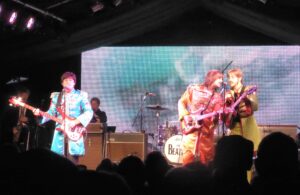
There is a real movement just now to make use of different ways in which to communicate archaeology and it is very exciting. This is not just through fiction writing, it encompasses a whole range of media including poetry (see the work of Laura Watts), art (eg: Aaron Watson) and sound (Ben Elliott and Jon Hughes).
One of the essential conundrums for those of us who work in the Mesolithic is that we are trying to communicate information about our Mesolithic forebears in a way which just did not exist in their world. Even if they did have some form of written communication that we have yet to recognize, their world was largely an aural one.
After listening to Mark Edmonds talk about his work at Jodrell Bank the other day I was thinking just how much sound must have mattered to the Mesolithic community and wondering to what extent our sound-world differs from theirs. Obviously the content will be different. But what about the quality? How much were they aware of levels and tones that we no longer notice? It would be nice to think that we could start to consider this when trying to interpret sites. We tend to diminish the significance of the soundscape because our world has become so visual. But it was not so in the past. This is not a new idea. One project has been woven around the iconic site of Star Carr, where archaeologist Ben Elliott and sound artist Jon Hughes worked to explore the sounds of Mesolithic Britain.
It is important stuff because it helps to make our understanding of life in the past more complete. We can never be sure precisely how people reacted to the aural world around them, but we can start to put together the suite of sounds that they would have encountered and by learning to investigate other senses beyond the visual we add depth to our explorations of the emotional reactions to the world in which people lived. These reactions went on to drive the physical world they created for themselves. And it is from this physical world that the remains of archaeology survive.
In this way we enrich our archaeological understanding. Phenomenology, while still mediated through the mind-set of the twenty-first century person, becomes truly multi-dimensional. Ironically, this step back towards the past has been made possible by modern developments in recording and listening technology as well as increasing awareness of the value of exploring a wider range of data.
And, of course, it is fun!
You must be logged in to post a comment.